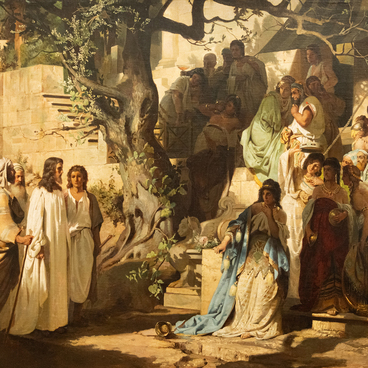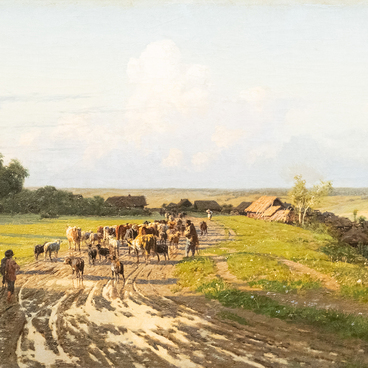Vasily Ivanovich Denisov, a symbolist artist, landscape painter, portraitist, and set designer, was born in 1862. He received a higher musical education at the Warsaw Institute of Music where he studied the French horn. After that, he worked as an orchestra musician — at first with the Russian Private Opera of the entrepreneur and philanthropist Savva Ivanovich Mamontov and later with the Russian Drama Theater of the manager Fyodor Adamovich Korsh.
By the age of 30, Vasily Denisov chose fine arts as his primary focus. In 1895, he started painting on his own and studied in the studios of the painter and set designer Konstantin Alexeevich Korovin, and the painter and draftsman Valentin Alexandrovich Serov. He participated in exhibitions of the Mir Iskusstva (World of Art) association.
In 1915, Vasily Denisov held solo exhibitions in Moscow and Petrograd. He was a prolific artist and produced numerous church paintings, landscapes, decorative panels, portraits, and symbolic and fantastical compositions.
His scenic designs were widely known during the first two decades of the 20th century, as he designed sets for many productions of the leading theaters in both Moscow and St. Petersburg.
“The Fall” is a colorful mosaic painting. The plot is transformed along the vertical direction: the scene starts with Paradise and then shifts to a garden filled with blooming trees. Below, closer to the center, the colors change, and the scene becomes enclosed by a serpent. Adam and Eve are in the center of the scene.
The strokes are applied with a thin brush and arranged randomly on the canvas. The volume is achieved through the use of fragments of cobalt, emerald, and ocher paint. The body of the snake is outlined in black. The artist did not use sharp angles and broken lines. In the lower part of the painting, the volume is larger. The composition is created through twisting shapes, paint application technique, colors, light, and recurrent motifs. The painting is divided into compositional and ideological fragments. There are hardly any gaps between the brushstrokes.


